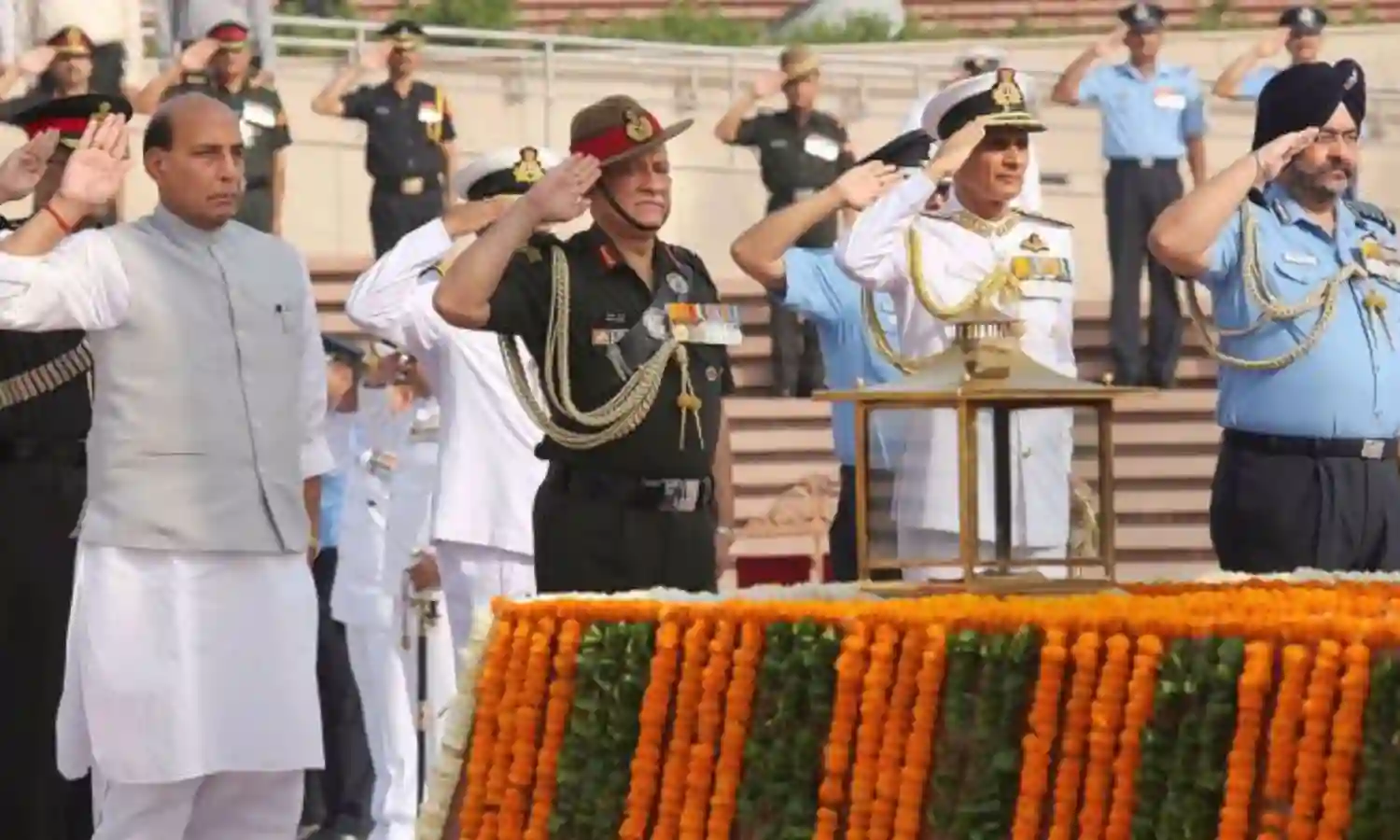The Chief of Defence Staff - Not What, But How?
The status quoists will have to be pushed out of their comfort zone

Two recent announcements by the government – the creation of a Chief of Defence Staff for the armed forces and the merger of public sector banks – though diametrically opposite in context, share a common concept: bringing about synergy, so that the whole is more than the sum of its parts.
While the merger of banks will likely be implemented with only minor hiccups, the CDS has a rocky road ahead. There has been a flurry of writings in the media as to what should be done, or not, while creating the CDS. But the real question needing address is how it can be done.
The concept of a CDS is neither new nor unique to our country. It has been talked about for nearly five decades. The last serious and formal articulation was by the Kargil Review Committee which was endorsed by the appointed Group of Ministers. Two decades later it finds revival with an apparent intent to implement.
Ironically, we were the first country in the world to set up a joint inter-services pre-commission training institution for the officers of the armed forces (the National Defence Academy) after World War II, as also the combined Defence Services Staff College, and are perhaps the last to attempt integration of the armed forces.
There have been any number of studies, committees and recommendations on the higher defence management structure and the CDS. The KRC, set up, and its findings and recommendations endorsed by the political executive, clearly spelt out the concept and structure required to ensure the integration and jointness of the services: the creation of a CDS, integrating the three services with the Ministry of Defence, thereby making the three service chiefs part of the government.
Concurrently, the Arun Singh Committee recommended the creation of theatre commands for operational integration. The shortcomings of the existing system and the tortuous path to the present announcement are too well known to bear repetition. The most telling comment was made by the Defence Minister at the India Today Conclave in 2015, when he openly stated that there was no integration mechanism that existed between the three services, resulting in infighting and wasteful expenditure.
Defining the role, responsibility, authority of the CDS and the structures required to enable him to function, as also the integration of the services, is the basic imperative. The fountainhead for implementation is the Ministry of Defence, which in its present shape and form is unlikely to deliver, with the service headquarters out of the decision-making ambit.
Mohan Guruswamy describes it as ‘a tangled web of inability to understand security issues, prevarication, bureaucratic intrigue, political indecision and all-pervasive corruption.’
Strange as it may sound, the Defence Secretary is responsible for the defence of India!
To this may be added the unique perpetuation of authority without any responsibility or accountability.
The services on the other hand are anxious to protect their turf and disinclined to shed operational control to joint commanders from the other service.
The Americans experienced similar bottlenecks in achieving full integration of their services. Having created the Department of Defence through the National Security Act of 1947, inter-service rivalry and a lack of jointness persisted throughout the Vietnam War, resulting in the catastrophic failure of the Iranian hostage rescue mission in 1980 and hindering effective prosecution of the invasion of tiny Grenada in 1983.
Disjointed procurement and the duplication of facilities resulted in wasteful expenditure, besides the fact that individual service war-fighting doctrines were evolved in isolation. Much like in India today, each service concerned itself with securing the maximum fund allocation for itself, rather than creating an integrated capability.
The Goldwater Nicholas Act of 1986 finally legislated the integration of the services and defined the command structure and responsibility, as also the professional military education, of the officer corps to handle joint structures.
In our context two fundamental issues need to be addressed if the intent of creating the CDS is to have any meaning. Firstly, defining the role, responsibility, command authority and place within the national security management structure of the CDS. The second requirement is to integrate fully the Ministry of Defence and the service headquarters. Further reorganisation can and will follow.
Major structural and organisational changes in the military invariably entail the dilution or enhancement of authority and accountability, pushing the status quo out of the comfort zone and throwing up inherent resistance by the military and bureaucracy alike.
Creating a statutory obligation to implement the concept of integration, and creating the concomitant structures to overcome individual, departmental and organisational resistance and reluctance can only be done by an Act of Parliament: a National Defence Act, which would provide the legal authority and foundation for change.
Historically, such major changes have been brought about by the political leadership and not the military itself, or the bureaucracy. Our case is no different. We came very close to implementing the concept of a CDS on more than one occasion, but backed off when the political leadership gave in to opposition from within and without the services.
The Red Fort announcement to synergise capabilities and bring about change in our military structures will similarly need strong political intervention and follow-up to translate the concept into reality.
It may even require sacking the military and bureaucratic brass unwilling to change.
Lt General N.S.Brar is former Deputy Chief, Integrated Defence Staff and Member, Armed Forces Tribunal.



